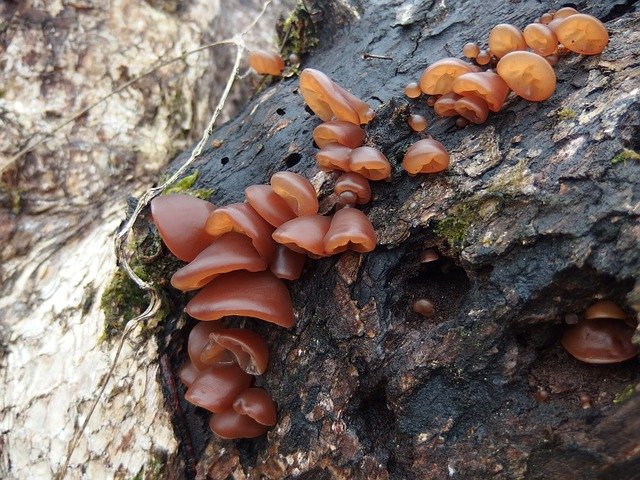
Auricularia is a medicinal mushroom rich in protein and calcium. Used as a blood and vascular system tonic, it lowers cholesterol and triglyceride levels as well as regulates blood sugar. Let’s find out better.
Description of the mushroom
Auricula-Judae or Auricularia, takes its name from a popular legend that calls it the “ear of Judas“. This legend tells that the mushroom assumed this shape due to the curse on which Judas, the apostle who betrayed Jesus, hanged himself overwhelmed by feelings of guilt.
In China it is called Mù Er “wooden ear”, in Japan Kikurage “tree jellyfish” and in Vietnam “cat’s ear fungus” or “cat’s ear”. This mushroom is born and grows on dead stumps and branches, especially of elderberry, but also of walnut, beech, willow, locust tree at the end of winter and in spring, and has no stem.
Much appreciated in the kitchen especially in Eastern countries where it is grown in large quantities and sold as a delicacy. In the West, however, it is little known and difficult to find except in Chinese restaurants as a food.
The properties of Auricularia
It is referred to as a “mushroom friend of the heart and of serenity”, in fact it is often combined with Reishi for its anticoagulant properties, since it increases the fluidity of the blood and prevents the formation of emboli.
It has a powerful cardiovascular protection action by preventing vascular obstructions with a lipid-lowering and antiplatelet effect, without bleeding and above all without damaging the collagen.
For hundreds of years it has been used as a remedy of the popular medicinal tradition according to the “Doctrine of Signature” which dates back to 19th century Europe. According to this doctrine, plants, and therefore also fungi, resemble parts of the body and can be used to treat pathological conditions associated with human organs.
Auricularia resembles the folds of the throat and was therefore used boiled in beer, milk or vinegar for throat problems (inflammation, sore throat, etc.). Its gelatinous consistency suggests mucous membranes and eyes, so it was also used for eye diseases and for the wetting of the mucous membranes.
Rich in proteins, it contains a lot of calcium (357mg / 100gr), phosphorus, iron (for the same quantity its iron content is 7 times higher than that of pork liver), vitamins of group B (B1 and B2 in particular), mannans, glucuronic acid, lecithin and cephalin.
It is a strong tonic of the blood and vascular system. There are studies that prove that the regular intake of this mushroom leads to a really powerful antioxidant effect and that it is able to activate DNA repair systems thus protecting against degenerative diseases and cardiovascular diseases.
It also lowers cholesterol and triglyceride levels as well as regulating blood sugar, for these reasons it is an excellent support remedy in the metabolic syndrome and in the control of diabetes, in particular type II.
When to use it
It has a relaxing action, calms bleeding, laxative, humidifies lungs and mucous membranes, acts on the cardiovascular system, helps in peripheral venous insufficiency, acts as a blood thinner, in the control of diabetes II. In particular, and has a strong action as a platelet antiplatelet agent.
Undesirable effects of Auricularia
Not recommended for women seeking pregnancy due to its anti-fertility effects related to the reduction of the embryo’s ability to implant. However, caution should be observed in the use of this fungus during anticoagulant therapies.
Auricularia in traditional Chinese medicine
Auricularia is a red mushroom like Reishi therefore suitable for the subjects of the Fire Lodge of TCM due to its refreshing nature.
It has a sweet taste with a refreshing effect, its action is aimed at the Liver-stomach-large intestine-lung meridians, and its main lodge is “Fire”.






